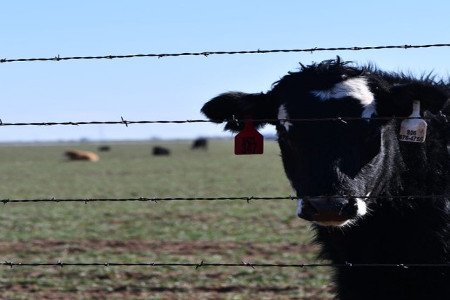By Kay Ledbetter
Many people are hearing about coronavirus for the first time as the China strain, COVID-19, affecting humans causes concern all across the world. But coronaviruses are not new to livestock and poultry producers, according to a Texas A&M AgriLife veterinary epidemiologist.
According to the Centers for Disease Control and Prevention, common human coronaviruses usually cause mild to moderate upper-respiratory tract illnesses, like the common cold. Most people get infected with one or more of these viruses at some point in their lives.
But the CDC is now responding to an outbreak of respiratory disease caused by a novel or new coronavirus that was first detected in Wuhan City, Hubei Province, China.
“Coronavirus is a common virus in livestock herds and poultry flocks seen routinely worldwide,” said Heather Simmons, DVM, Institute for Infectious Animal Diseases, IIAD, associate director as well as Texas A&M AgriLife Extension Service’s associate department head and extension program leader for Veterinary Medical Extension. IIAD is a member of the Texas A&M University System and Texas A&M AgriLife Research.

Wildlife in China may be human strain carriers
“In wildlife, bats are known to carry over 100 different strains of coronavirus, and wild civets are the source of the coronavirus that causes SARS (Severe Acute Respiratory Syndrome), first reported in China in 2002-2003,” Simmons said. “Although our understanding is still limited, wild pangolins (a scaly anteater) sold at live markets may be associated with the recently reported coronavirus outbreak in China.”
Bats, civets and pangolins are all commonly sold at live markets in China, she said. Coronaviruses from wildlife are dangerous since they have the potential to mutate, adapt and spill over to new species, including humans.
“That is the concern now, this new strain of coronavirus has emerged to cause disease in humans,” Simmons said. “It is important to create an understanding of the difference between coronaviruses occurring in domestic livestock and poultry compared to coronaviruses that spill over from wildlife to humans.”
Coronavirus in domestic livestock doesn’t jump to humans
Simmons said, to date, the coronaviruses in livestock are not considered reportable diseases because their main effect is as an economic burden to livestock producers.
They are known to occur worldwide annually, with some of the most common coronaviruses found in production animals to include the scours and winter dysentery in beef and dairy cattle, porcine respiratory coronavirus in swine and avian infectious bronchitis in poultry.
The World Health Organization has reported that while another coronavirus, MERS-CoV, is known to be transmitted from dromedary camels to humans, other coronaviruses circulating in domestic animals have not yet infected humans.
“That’s what is very important to understand at this time,” Simmons said. “We have been dealing with these diseases for a long time but as of yet, we have not seen cases worldwide transmitted from livestock to humans or vice versa.”
What does coronavirus look like in livestock?
While coronaviruses have a high morbidity, or rate of illness, in livestock and poultry they are generally considered to have low mortality, rate of death, Simmons said. Coronaviruses will affect either the respiratory system or the gastrointestinal system, depending on the species and the age of the animal.
Coronavirus in cattle
In calves, diarrhea commonly occurs in animals under three weeks of age due to a lack of obtaining antibodies when the calf does not get enough colostrum from the mother in order to build up immunity. Clinical signs include severe dehydration and diarrhea. The severity of the clinical signs depends on the age of the calf and their immune status. This is often seen by producers in the winter months as the virus is more stable in cold weather. The second clinical syndrome, winter dysentery is found in adult cattle. Clinical signs include bloody diarrhea with decreased mild production, loss of appetite with some respiratory signs. Bovine coronaviruses can also cause mild respiratory disease or pneumonia in calves up to six months. The virus is shed in the environment through nasal secretions and through feces.
Coronavirus in swine
There are multiple coronaviruses that affect swine. Like cattle, they affect the respiratory or gastrointestinal tract. In sows and piglets, porcine respiratory coronavirus usually presents with no clinical signs. If clinical signs do occur, it may be a transient cough within the herd and spread of this disease occurs through aerosolized methods.
Coronavirus in poultry
Infectious bronchitis virus, or IBV, is a rapidly spreading respiratory disease in young chicks. Clinical signs in laying hens include reduced production, eggshell abnormalities and decreased internal egg quality.
How to treat
Livestock producers should consult with a veterinarian for treatment, Simmons said. Treatment in livestock herds and poultry flocks typically includes supportive therapy of fluids. Antibiotics are not indicated for viral infections but may be used if a secondary bacterial infection occurs.
Source : tamu.edu